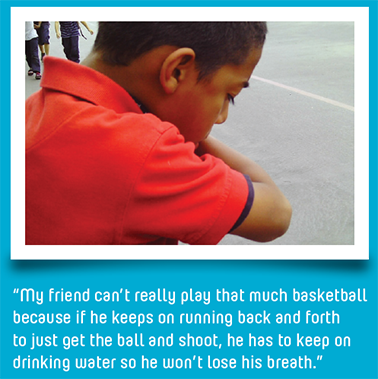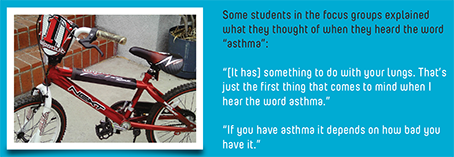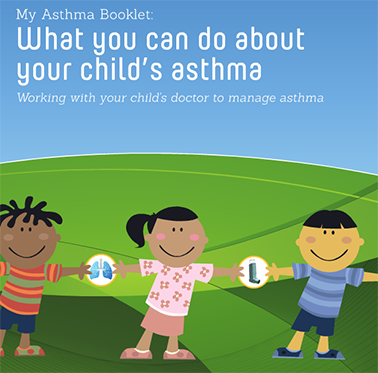The Most Powerful Weapon Against Asthma Is Education
SC CTSI supports community-driven asthma research project that helps kids breathe easier.
Asthma is the most common chronic childhood disease in the US, its airway-constricting attacks striking 14% of all kids in the country and accounting for three times more lost school days than any other chronic disease.
It is particularly widespread in the seaside city of Long Beach, California, where asthma rates reach 22% — more than one in five kids.
Yet asthma is incompletely understood. Its debilitating attacks are triggered by a complex interaction of medical, physical and environmental factors; managing these triggers can be a tricky juggling act. Medications help, but the most powerful weapon in the fight against asthma is education.
Officials at the respiratory health organization BREATHE California of Los Angeles County (BREATHE LA) decided to take on Long Beach's childhood asthma. They reached out to the Southern California Clinical and Translational Science Institute (SC CTSI) at USC to help.
The result was a unique NIH-funded but community-driven research project to adapt an extensive teaching curriculum about asthma and its management, aimed at Long Beach area kids and their families.
The curriculum also promotes a buddy system that enlists the help of friends who don't have asthma. The buddy is taught to recognize signs of an attack and how to respond — by helping their friend stay calm, notifying an adult, reminding them to observe "pursed lip" breathing, and locating their inhaler.
Helping Kids Picture Asthma Triggers
The first step in adapting an asthma education curriculum was finding out what the children and their families already knew. But interviews and focus groups do not always generate real insight — especially with kids — so researchers employed an innovative Photovoice technique that lets kids express themselves through photographs.
Researchers sent kids home with cameras for a week, and told them to take photographs that illustrated their beliefs about asthma; for example photos of activities that are hard to do for someone who has asthma, or photos of asthma triggers. At the next meeting, the investigators used the photos to get the children talking.
"The Photovoice approach really opened the kids' eyes to their surroundings so they could see how the environment affected them," said Arrianna Eberhart, site director at the Boys & Girls Club of Long Beach, a partner on the research team.

Asthma Myths and Misconceptions
Asthma affects everyone differently. A trigger for Joe may have no effect on Jane. As a result, investigators found, it is easy for myths and confusion to persist.
One commonly held myth researchers in the Long Beach project uncovered was the belief that pet Chihuahuas were beneficial for asthma. In fact, any furry pet can harbor dander that can be a trigger.
An even more widespread myth: kids with asthma should not engage in sports and active games. "We found that some parents are overly cautious in terms of avoiding physical activity," said Charlene Chen, Vice President of Delivery Redesign at COPE Health Solutions, another research team partner. "With childhood obesity such a widespread problem, the last thing we want to do is tell kids to be less active. Exercise is important, and many activities can be undertaken by a child with well-controlled asthma, with proper preparation and physician oversight. We had to find a way to convey that balance."

But precisely because every kid is different, the new curriculum stresses that specific asthma management plans should be developed individually with the child's doctor, said Chen.
The research team also produced a booklet, "What you can do about your child's asthma," that provides more information for parents about working with doctors to manage the condition and prevent attacks. View it now
Helping Parents and Children Advocate for their Health
Long Beach happens to be situated near several asthma risk factors, including freeways, an airport, and one of the nation's largest shipping ports. But many of the triggers for asthma attacks are closer to home and can be more easily managed — if people feel empowered to take action.
"We also added a section in the curriculum to explain to children that they have the right to advocate for their health, such as asking a school principal to tear out old classroom carpeting or take other steps to remove triggers," said Marisela Robles, MS, a community liaison at SC CTSI. "The advocacy section teaches kids to take action when they spot asthma triggers, for example, by telling a parent about an issue they've discovered."
The curriculum promotes numerous precautions kids, families, teachers and caregivers can take to prevent asthma attacks. These include measures such as a buddy system that enlists the help of friends who don't have asthma. The buddy is taught to recognize signs of an attack and how to respond — by helping their friend stay calm, notifying an adult, reminding them to observe "pursed lip" breathing, and locating their inhaler.
The research team also produced a booklet, "What you can do about your child's asthma," that provides more information for parents about working with doctors to manage the condition and prevent attacks.
Researchers say their next steps are to evaluate the curriculum's efficacy, and then to refine it further so that it can be easily reproduced throughout the country.
"What's exciting about the asthma prevention project,” noted Katrina Kubicek, MA, assistant director of SC CTSI Community Engagement, “is that we worked with the community to address their health issues in a scientifically rigorous manner that builds their capacity to take on other public health problems."
SC CTSI is part of the 60-member Clinical and Translational Science Awards (CTSA) network funded through the National Center for Advancing Translational Sciences (NCATS) at the NIH (Grant Number UL1TR000130). Under the mandate of “Translating Science into Solutions for Better Health,” SC CTSI provides a wide range of resources, services, funding, and education for researchers and promotes online collaboration tools such as USC Profiles.
Related links
- View research presentation: After-school settings as a method of addressing asthma management and prevention: A community-based research perspective
- View research poster: Community-based research to address asthma management and prevention




